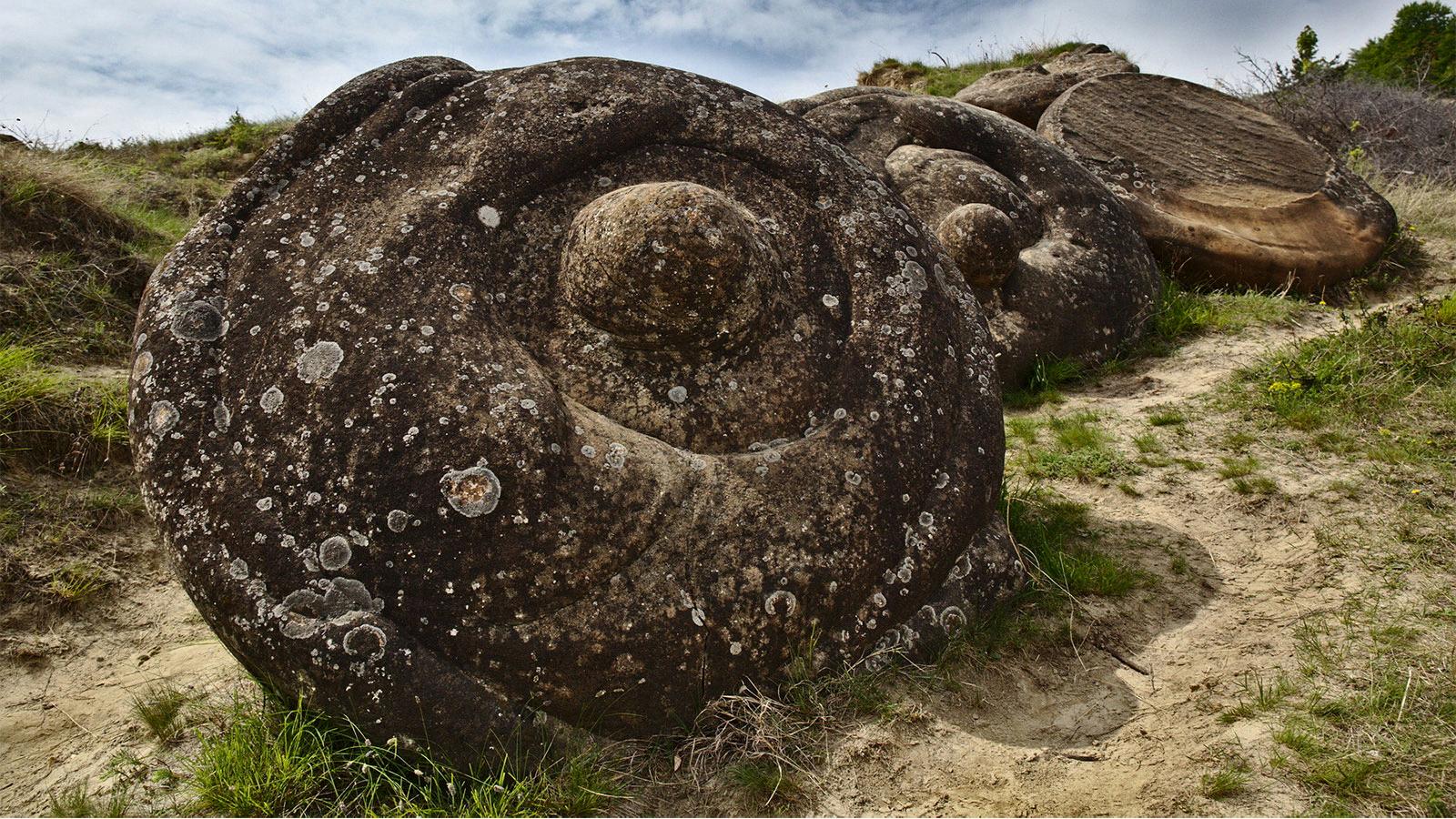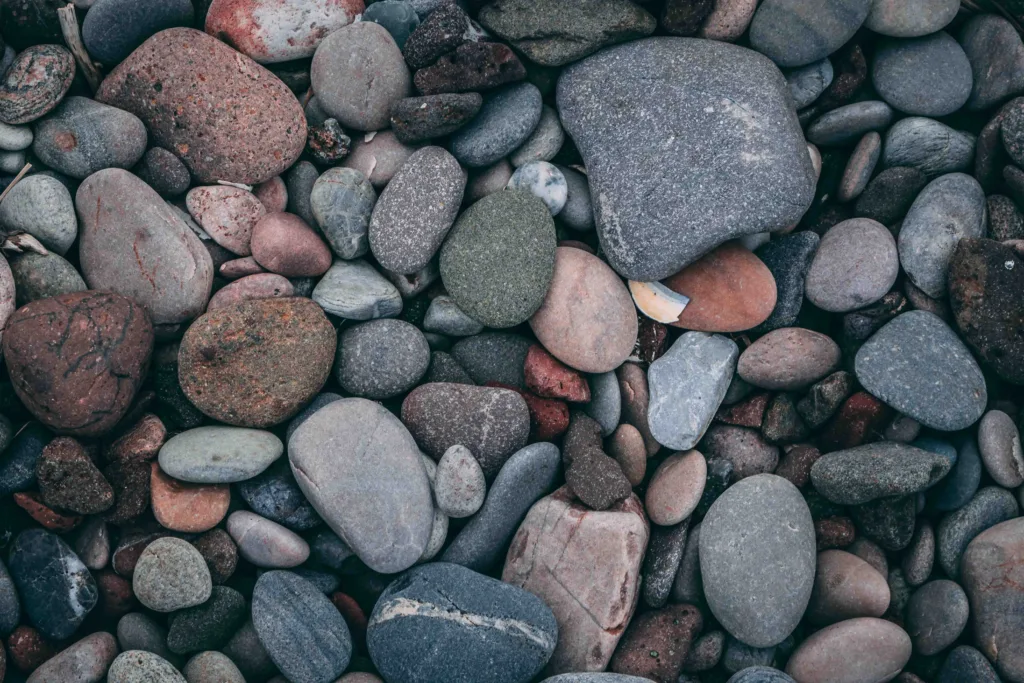Stones are often considered to be unchanging objects that remain the same for centuries, but did you know that some rocks can actally grow and multiply? These fascinating rocks are called trovants, and they are found in a few locations around the world, including Romania and Turkey.
The growth of trovants is caused by a unique chemical reaction that occurs when rainwater seeps into the rocks. As the water makes contact with the minerals already present in the stone, a pressure reaction occurs that causes the rock to expand in girth. This growth occurs over time and is not something that can be seen happening in real-time.
While trovants are a rare example of growing rocks, the formation of all types of rocks is a process that can take anywhere from one day to millions of years. There are three main types of rocks: igneous, metamorphic, and sedimentary. Intrusive igneous rocks can take thousands of years to crystallize, while extrusive rocks can form in just a few days. Sedimentary and metamorphic rocks, on the other hand, can take millions of years to form.
The formation of rocks is often influenced by the movement of tectonic plates. These large chunks of land can collide and cause earthquakes, and some plates are forced under others, where they heat up and eventually melt. This creates more lava, which can then erupt from volcanoes and cool to form new rocks.
Crystals are also an important part of the rock formation process. These structures often form when liquids cool and start to harden, as certain molecules in the liquid gather together to become stable. In nature, crystals can form when liquid rock, or magma, cools and solidifies.
The growth and formation of rocks is a complex process that can take a variety of forms. From the slow expansion of trovants to the rapid cooling of lava, rocks are constantly changing and evolving over time. Understanding the processes that govern rock formation can help us better appreciate the incredible natural beauty of our planet.
Can Stones Reproduce?
Trovants, also known as growing stones, are unique geological formations that have the ability to grow and multiply. These stones are found in Romania’s Vâlcea County and are believed to have formed over 6 million years ago.
When rainwater containing minerals seeps into the porous surface of the trovants, it reacts with the chemicals already present in the stone. This chemical reaction causes pressure to build up inside the stone, resulting in growth in girth. Over time, the stones can grow to be several meters in size.
Trovants can also multiply, which means that new stones can form around the original stone. This process occurs when the original stone absorbs rainwater and minerals, causing the pressure to increase and eventually split off a piece of the original stone. This new piece will then continue to grow and eventually become a separate stone.
It’s important to note that the growth and multiplication of trovants is a slow process that can take several years to be noticeable. Additionally, not all stones have the same growth potential, as it depends on the specific minerals present in the stone and the amount of rainwater that the stone is exposed to.
While stones cannot reproduce like living organisms, trovants have the unique ability to grow and multiply thrugh a complex chemical process.

Source: science.howstuffworks.com
The Growth Rate of Rocks
The formation of rocks is a complex process that can take a considerable amount of time. The time required for a rock to form depends on many factors such as the type of rock, the environment, and the geological processes involved.
Igneous rocks, which are formed from the solidification of magma or lava, can take anywhere from a few days to thousands of years to form. The time required for the formation of igneous rocks depends on the cooling rate of magma or lava. Intrusive igneous rocks, which form from magma that cools slowly beeath the Earth’s surface, can take longer to form than extrusive igneous rocks, which form from lava that cools quickly on the Earth’s surface.
Metamorphic rocks, which are formed from the transformation of existing rocks due to changes in temperature, pressure, and chemical composition, can take millions of years to form. The time required for the formation of metamorphic rocks depends on the intensity and duration of the geological processes involved.
Sedimentary rocks, which are formed from the accumulation and cementation of sediments, can also take millions of years to form. The time required for the formation of sedimentary rocks depends on the rate of sediment deposition, the type of sediment, and the environmental conditions.
The time required for a rock to form can range from a few days to millions of years, depending on the type of rock and the geological processes involved.
The Origin of Stones Found in the Ground
Stones in the ground, also known as rocks, are the result of various geological processes that have been taking place for millions of years. These processes include the movement of tectonic plates, volcanic eruptions, and erosion caused by wind, water, and ice.
Tectonic plates are huge pieces of the Earth’s crust that float on the molten rock layer below. The movement of these plates causes earthquakes and can force one plate under another, a process called subduction. When one plate is forced under another, it heats up and melts, forming magma. This molten rock can rise to the surface and erupt as lava, which then cools and solidifies to form new rocks.
Volcanic eruptions can also deposit new rocks on the ground. When lava flows out of a volcano and cools, it forms a type of rock called igneous rock. This rock can be found in many diferent forms, including lava flows, ash deposits, and volcanic tuff.
Erosion is the process of wearing away rocks and soil by the action of wind, water, and ice. As rocks are broken down, they can be transported by rivers and streams and deposited in new locations. Over time, these deposits can form sedimentary rocks, which are made up of layers of different materials.
Stones in the ground come from a variety of sources, including the movement of tectonic plates, volcanic eruptions, and erosion caused by wind, water, and ice. These processes have been taking place for millions of years, resulting in a wide variety of rocks and minerals that can be found all around the world.
Formation of Natural Crystals
Crystals are formed in nature when liquids undergo a process of cooling and solidification. As the liquid cools down, certain molecules within the liquid start to come together in an attempt to achieve stability. These molecules gather in a uniform and repeating pattern that eventually forms a crystal.
The process of crystal formation can occur in various natural settings. For example, magma, whch is liquid rock, can cool and solidify, leading to the formation of crystals. Similarly, crystals can form in solutions when the solvent evaporates, leaving behind the solute in crystal form.
The process of crystal formation is driven by a combination of factors, including the chemical composition of the liquid, the temperature at which it solidifies, and the pressure exerted upon it. The structure and shape of a crystal can also be influenced by these factors.
In addition to magma and solutions, crystals can form in other natural settings, such as within geodes, which are hollow rocks that contain crystals. Crystals can also form within the earth’s crust, as well as in sedimentary rocks.
The formation of crystals in nature is a fascinating process that is influenced by a range of factors. By understanding how crystals form, we can gain greater insight into the natural world around us.

Conclusion
Stones can grow though a process known as mineral absorption. When stones absorb minerals from rainwater, a pressure reaction occurs, causing the stone to grow in girth. This process is not visible to the naked eye and can take anywhere from one day to millions of years to occur, depending on the type of rock formation. Additionally, crystals can form in nature when liquid rock cools, creating a uniform and repeating pattern that forms the crystal. While the growth of stones may not be as visible as other natural phenomena, it is a fascinating process that can take place over vast spans of time.
